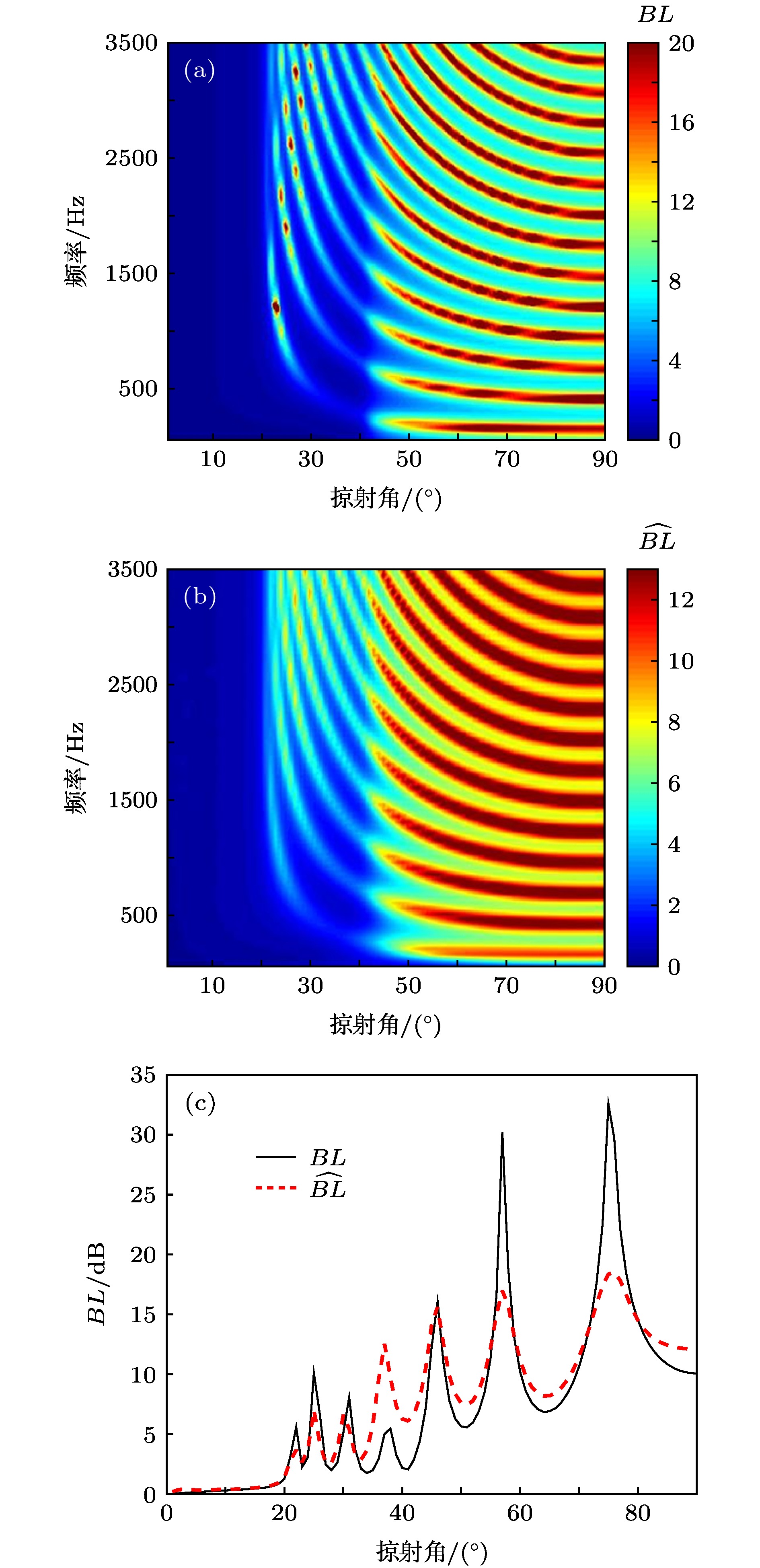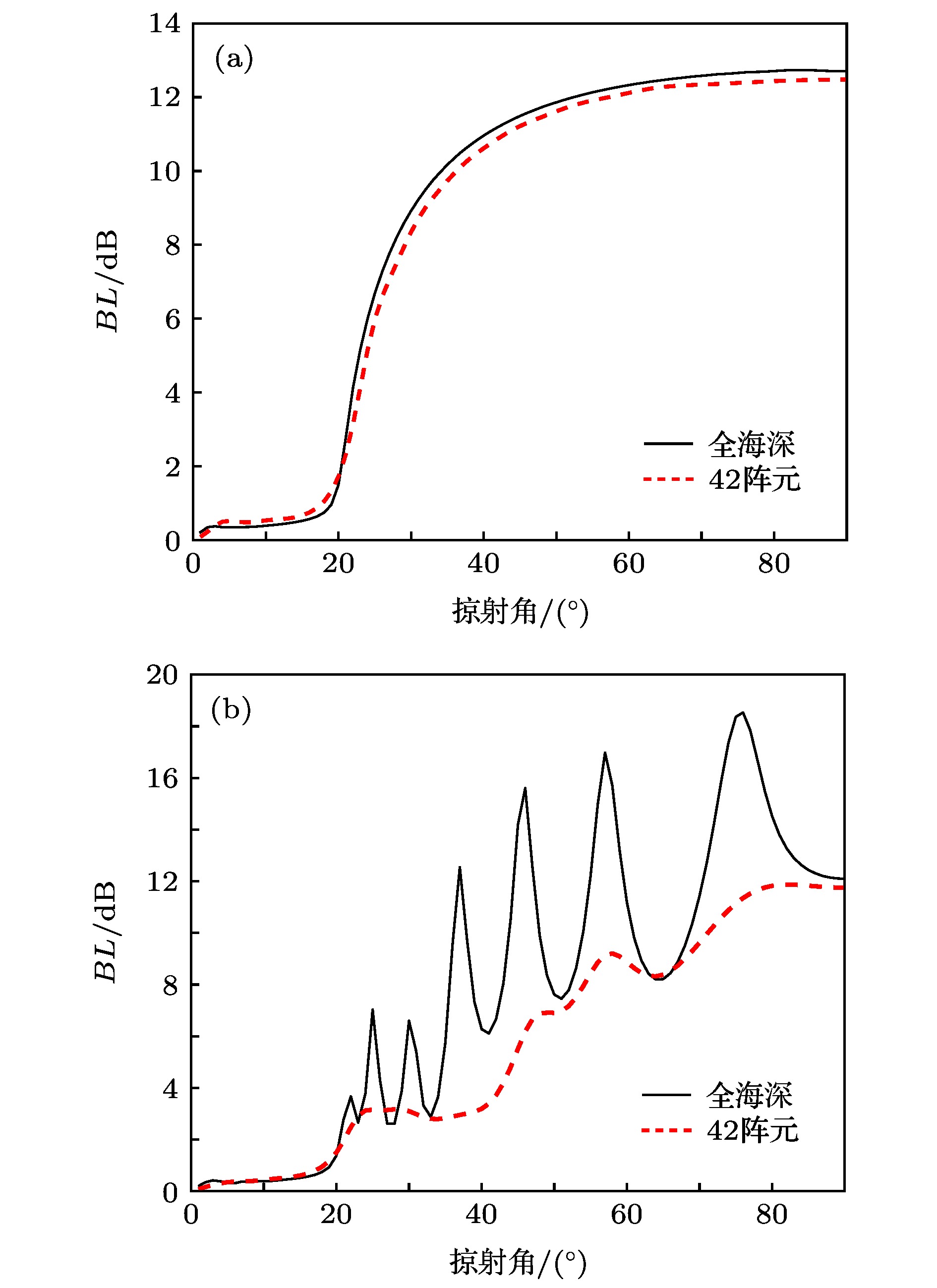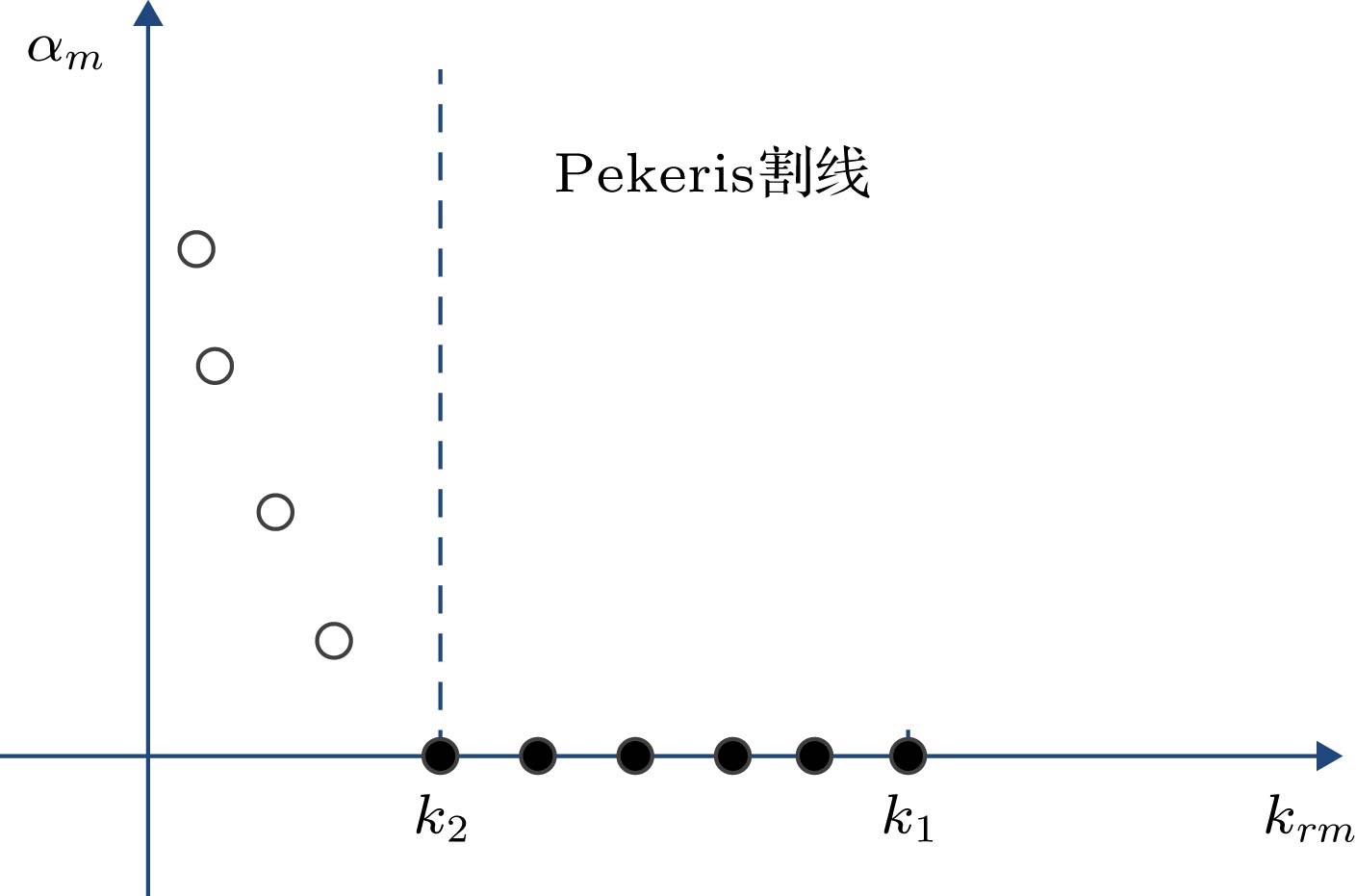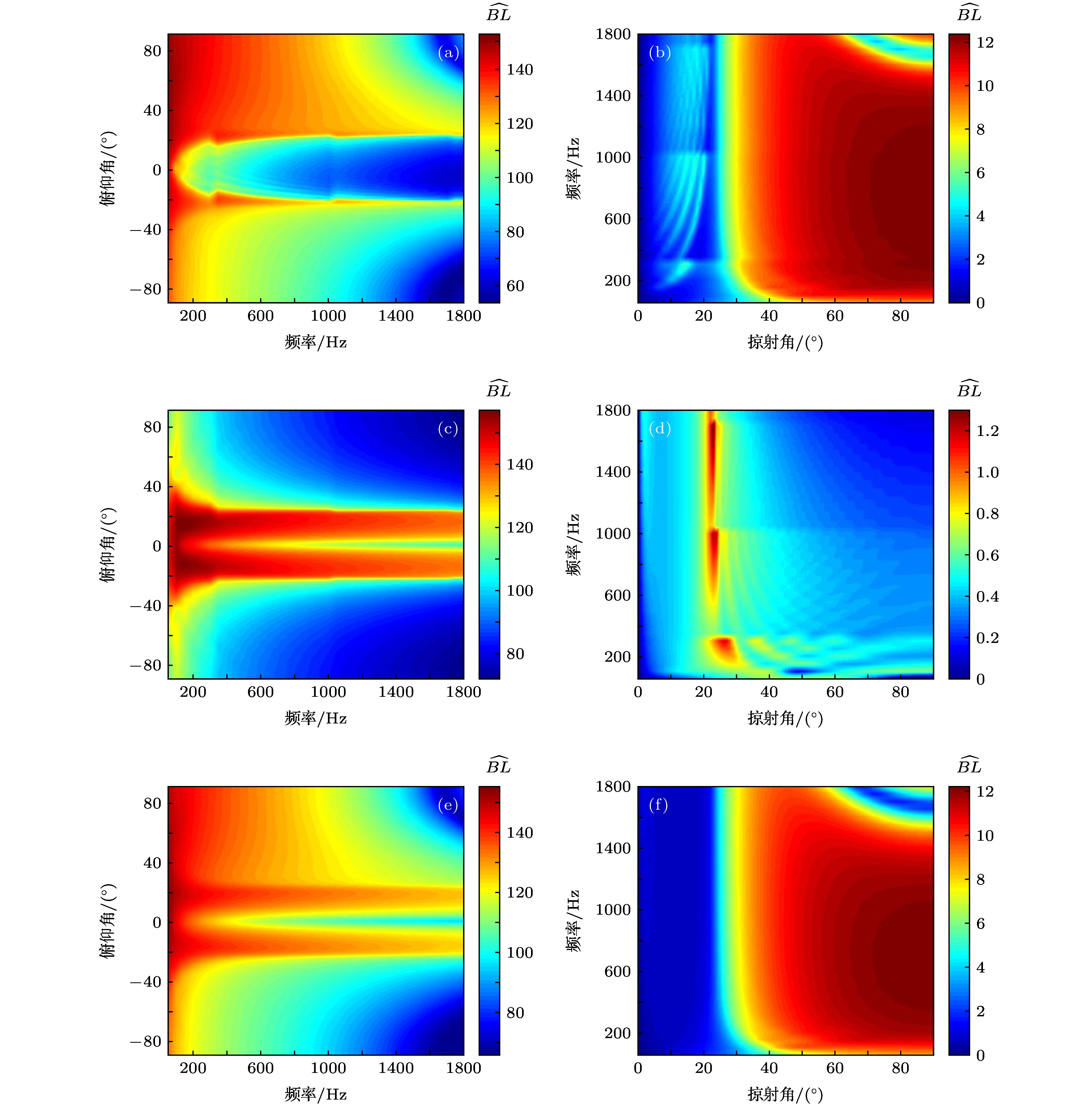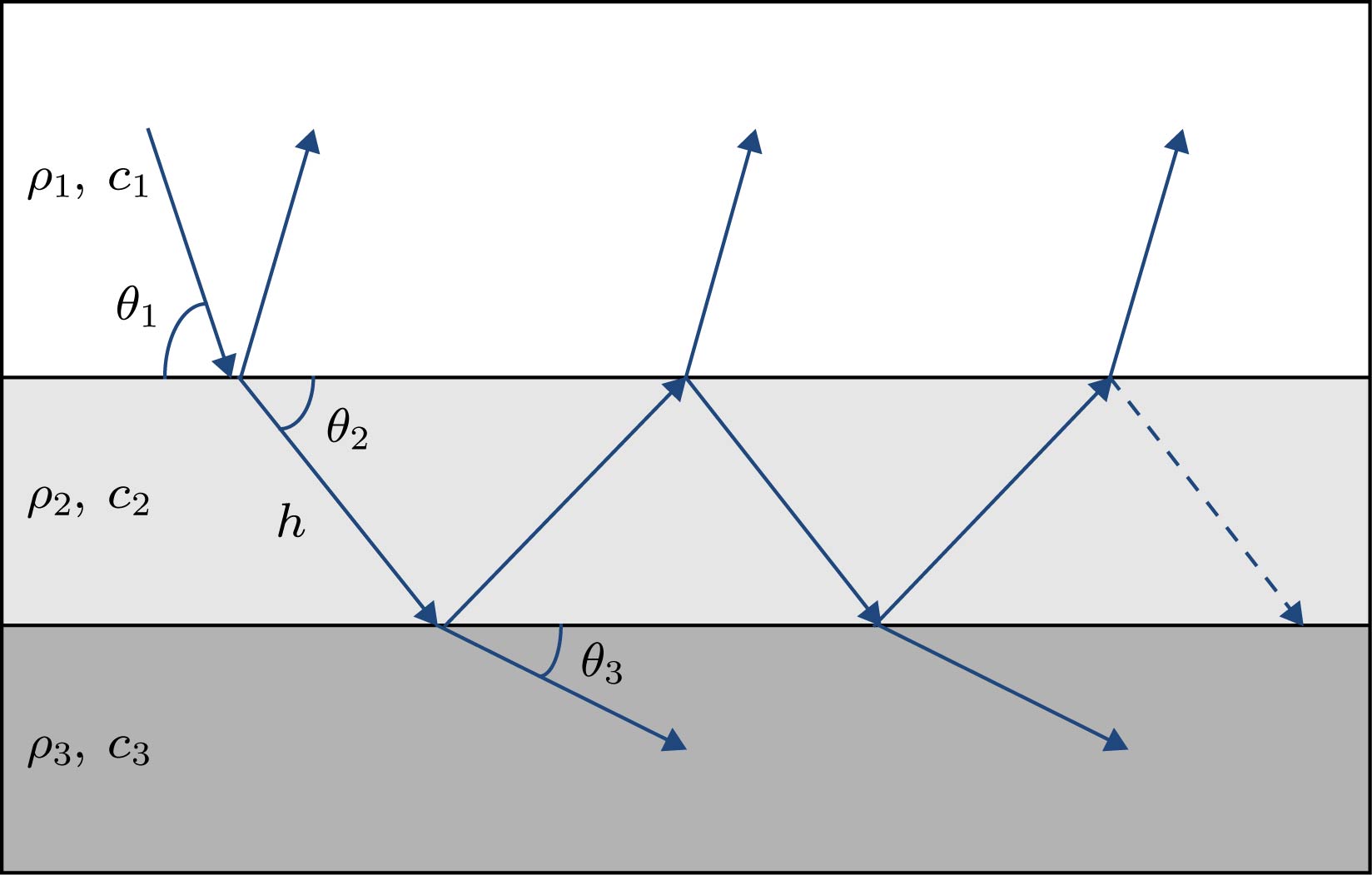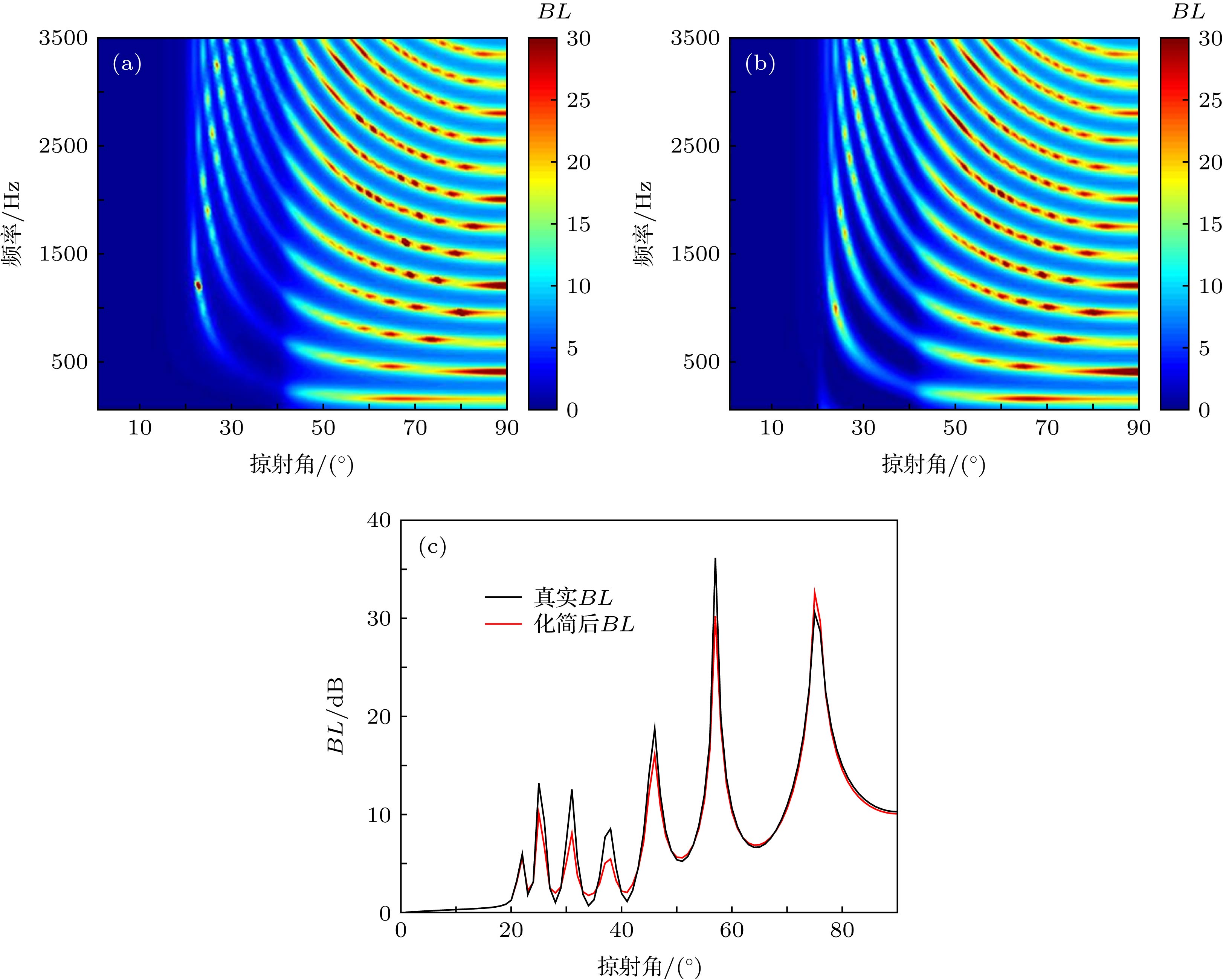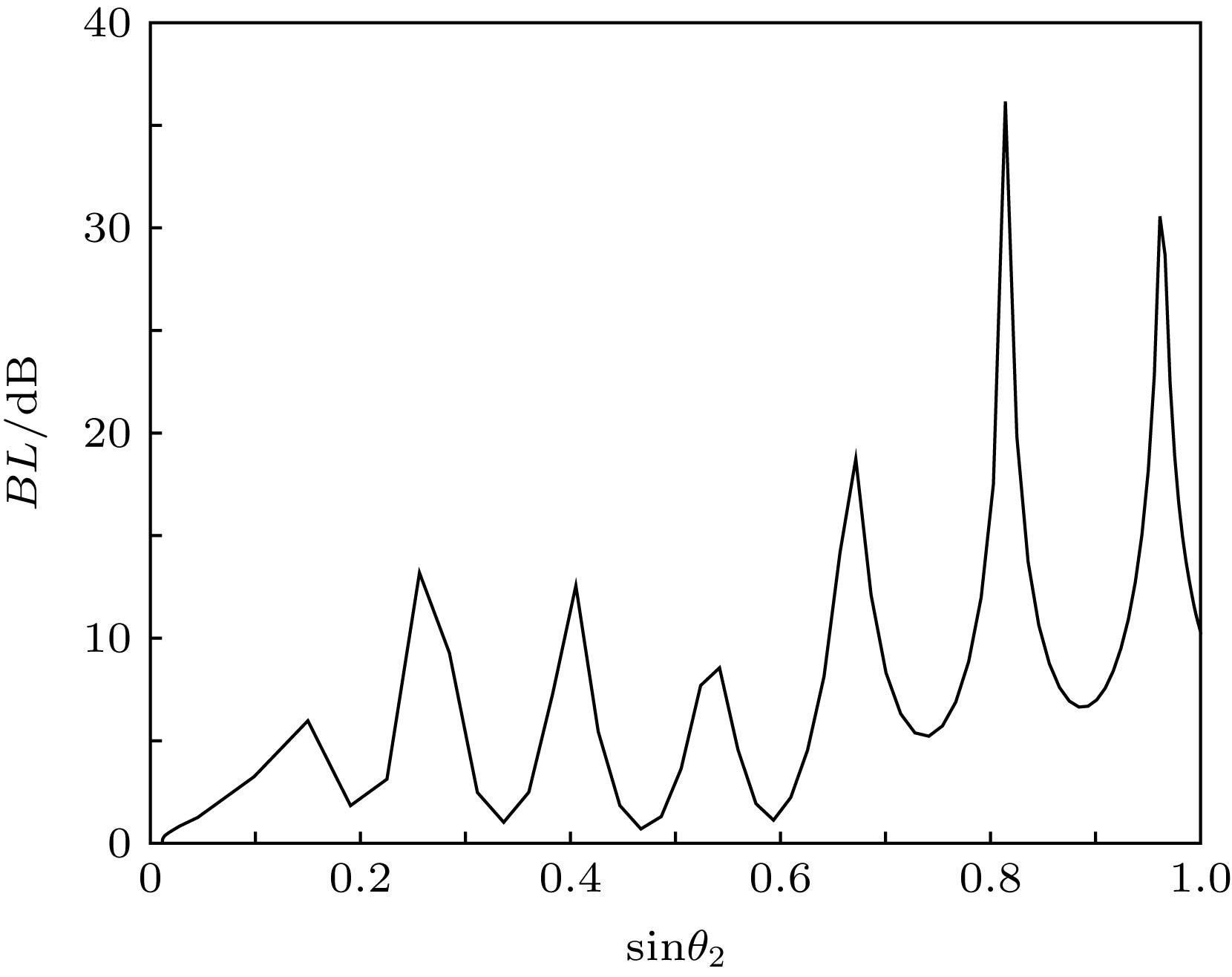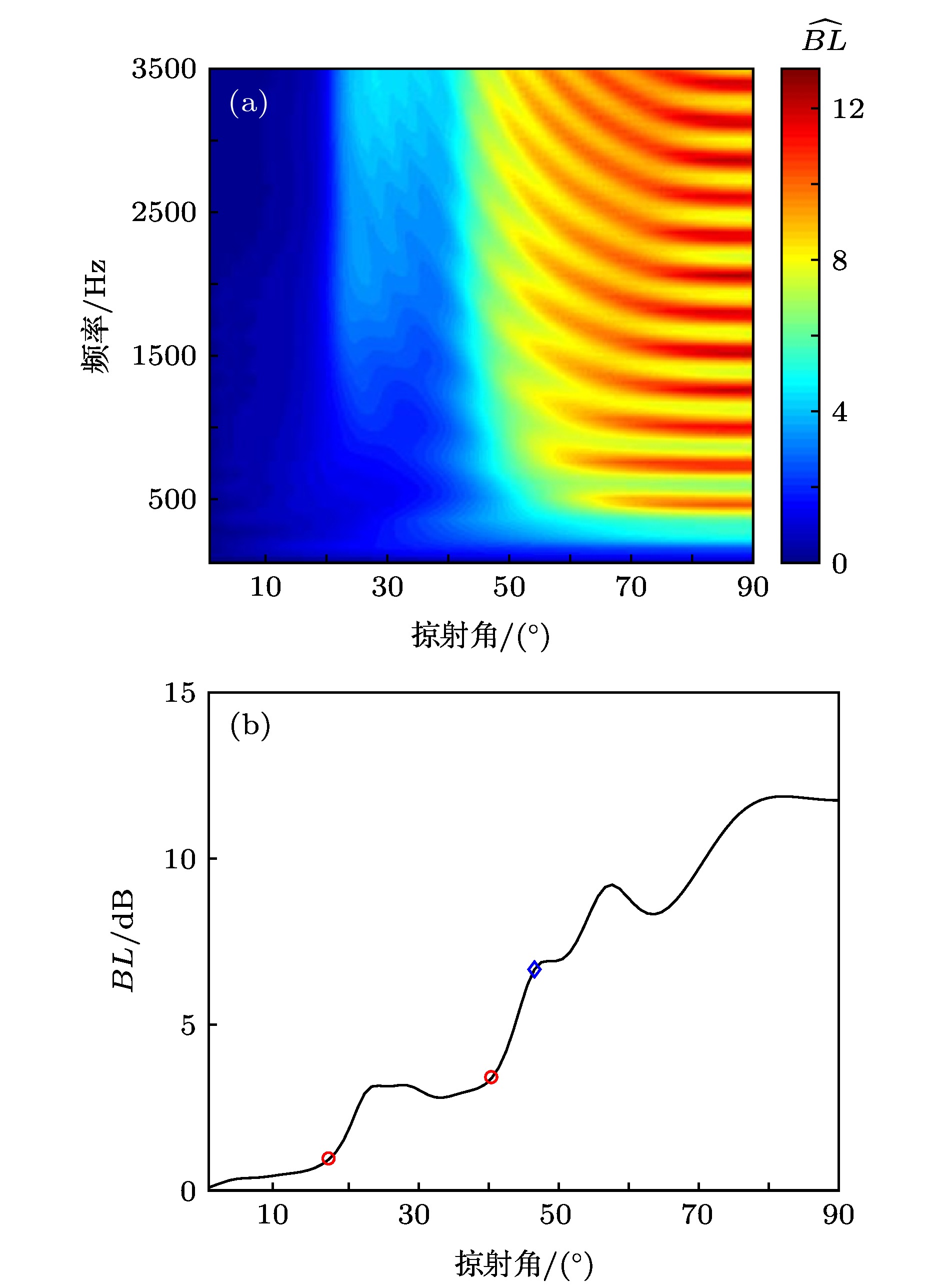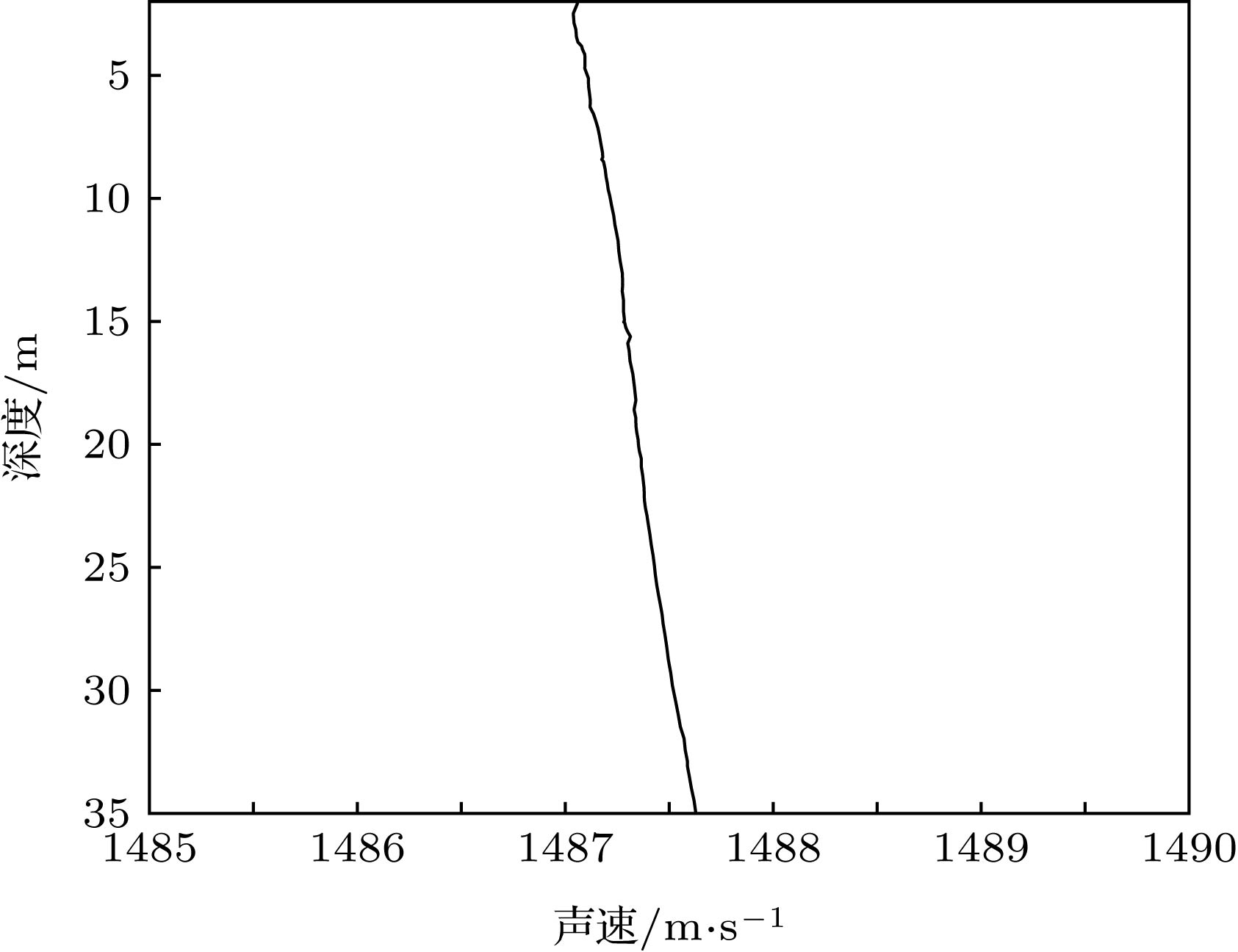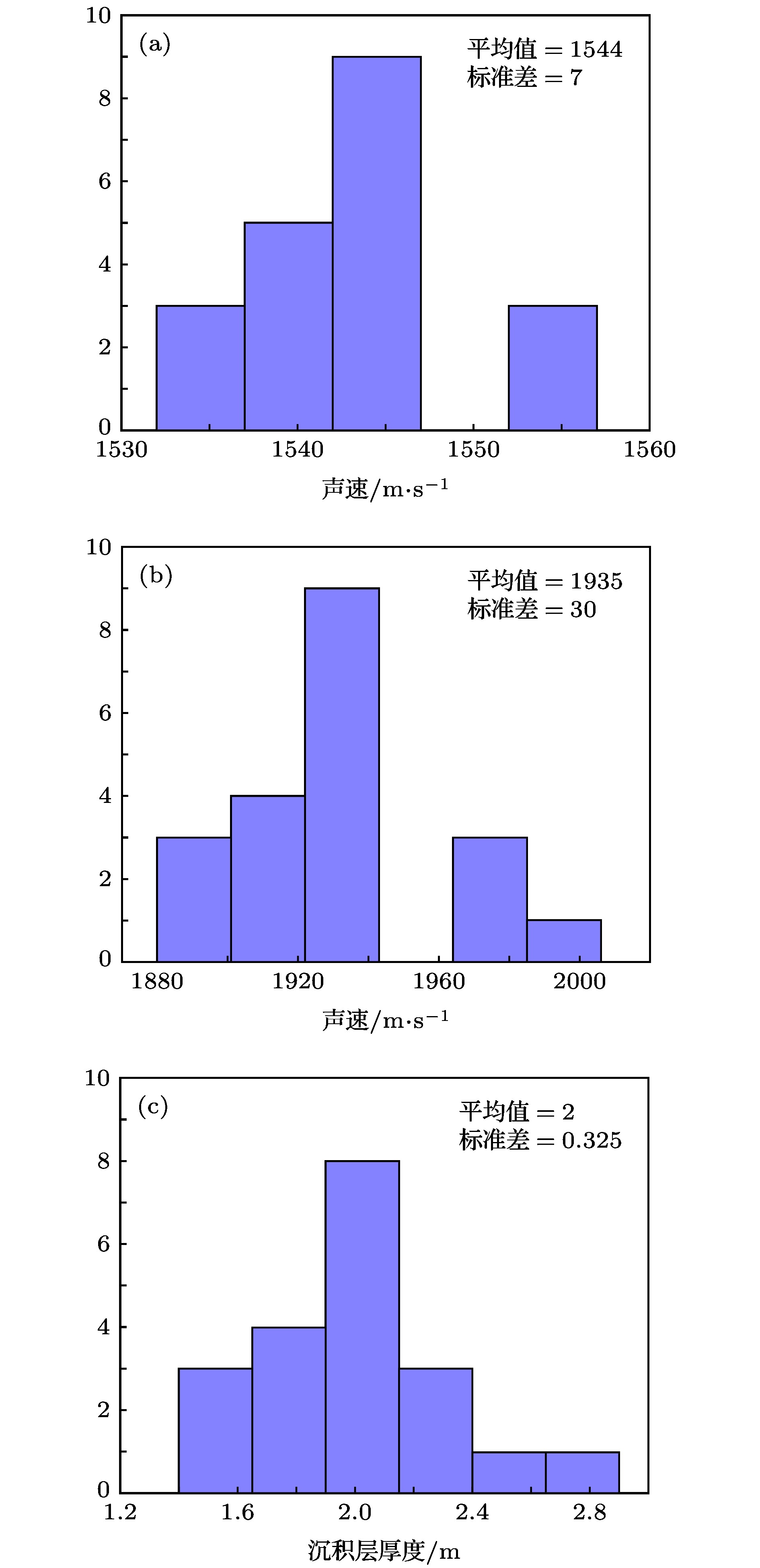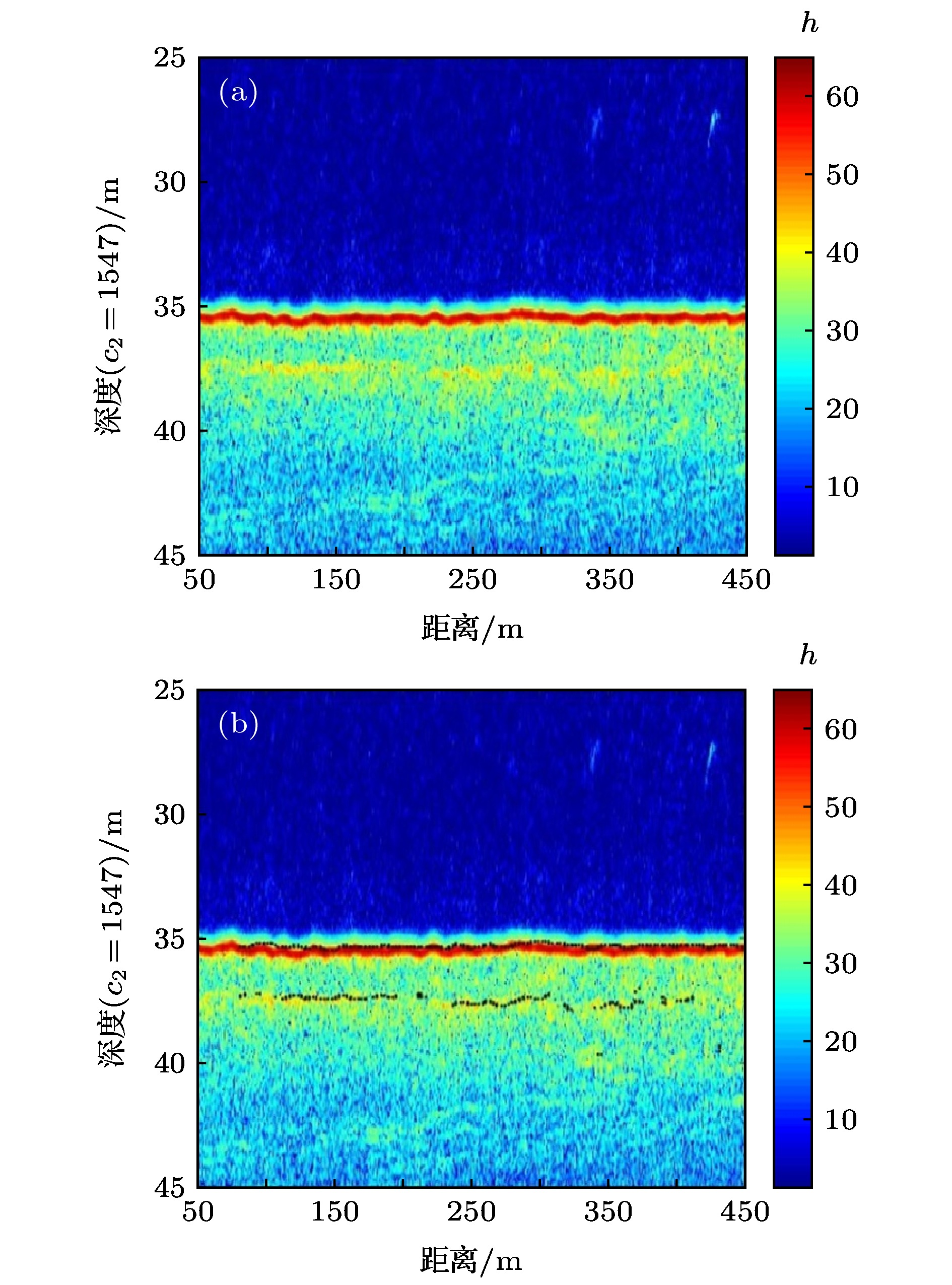-
The field of ocean ambient noise contains numerous information about the water column, especially the information about the sub-bottom. The geoacoustics parameters of sub-bottom are very important factors influencing the spatial characteristics of ocean ambient noise field. For different layered structures of the sub-bottom, the bottom-loss shows different critical angles according to sound speed of each layer, while the structure of interference fringe is dependent on the thickness of the sediment. Flux theory of ocean ambient noise proposed by Harrison is used in this paper. Using this theory, the curve of bottom-loss can be extracted by computing the ratio between the energy of the upward wave and the downward wave. From the ideal reflection coefficient, the influence of sound speed, density and attenuation coefficient on reflection coefficient are discussed in the situation of the sub-bottom of acoustic half space, while the reflection coefficient of 1 layer of sediment is simplified. Initially, the reflection coefficient is the sum of sound waves reflect from the sub-bottom transmitted from the same source at the same angle. Only the first two terms are reserved, so that the mechanism of the interference fringe can be easily discussed. The structure of interference fringe can be explained which is affected by the thickness of the sediment. The curve of bottom-loss oscillates periodically with the increase of the thickness of the sub-bottom. Also by the reciprocity principle, the interference fringe of the reflection coefficient can be explained by considering the sound transmitted from two point sources at the surface of the sea. In this way the same result can be obtained as that from the method of simplification. The result of the experiment in China Yellow Sea shows that the information about the reflection coefficient of the sub-bottom can be extracted by the vertical azimuth spectrum of ocean ambient noise. In this way, the critical angle can be obtained, so that the sound speed of the sub-bottom can be estimated by using Snell law. The structure of the interference fringe is also contained in the bottom-loss curve estimated by ocean ambient noise. Therefore the layered structure, sound speed and the thickness of the layer of the sub-bottom can be estimated.
-
Keywords:
- spatial characteristics of ocean ambient noise /
- bottom-loss /
- estimating geoacoustics parameters of sub-bottom
[1] Wenz G M 1962 J. Acoust. Soc. Am. 34 1936
 Google Scholar
Google Scholar
[2] Kuperman W A, Ingenito F 1980 J. Acoust. Soc. Am. 67 1988
 Google Scholar
Google Scholar
[3] HarrisonC H 1996 J. Acoust. Soc. Am. 99 2055
 Google Scholar
Google Scholar
[4] 林建恒 2002 博士学位论文 (北京: 中国科学院研究生院)
Lin J H 2002 Ph. D. Dissertation (Beijing: Graduate University of Chinese Academy of Science) (in Chinese)
[5] 张乾初 2017 博士学位论文 (北京: 中国科学院大学)
Zhang Q C 2017 Ph. D. Dissertation (Beijing: University of Chinese Academy of Science) (in Chinese)
[6] 郭新毅, 铁广鹏, 李凡, 马力 2014 物理 43 723
Guo X Y, Tie G P, Li F, Ma L 2014 Physics 43 723
[7] 江鹏飞, 林建恒, 孙军平, 衣雪娟 2017 物理学报 66 014306
 Google Scholar
Google Scholar
Jiang P F, Lin J H, Sun J P, Yi X J 2017 Acta Phys. Sin. 66 014306
 Google Scholar
Google Scholar
[8] 蒋光禹, 孙超, 谢磊, 刘雄厚 2019 物理学报 68 024302
 Google Scholar
Google Scholar
Jiang G Y, Sun C, Xie L, Liu X H 2019 Acta Phys. Sin. 68 024302
 Google Scholar
Google Scholar
[9] Zeng J, Chapman N R, Bonnel J 2013 J. Acoust. Soc. Am. 134 EL394
 Google Scholar
Google Scholar
[10] 李梦竹, 李整林, 周纪浔, 张仁和 2019 物理学报 68 094301
 Google Scholar
Google Scholar
Li M Z, Li Z L, Zhou J X, Zhang R H 2019 Acta Phys. Sin. 68 094301
 Google Scholar
Google Scholar
[11] 周建波, 朴胜春, 刘亚琴, 张海刚, 屈科, 李晓曼, 张明辉 2019 声学学报 44 337
Zhou J B, Piao S C, Liu Y Q, Zhang H G, Qu K, Li X M, Zhang M H 2019 Acta Acoust. 44 337
[12] 江鹏飞, 林建恒, 马力, 殷宝友, 蒋国建 2016 声学学报 41 59
Jiang P F, Lin J H, Ma Li, Yin B Y, Jiang G J 2016 Acta Acoust. 41 59
[13] 骆文于 2002 博士学位论文 (北京: 中国科学院声学研究所)
Luo W Y 2002 Ph. D. Dissertation (Beijing: Institute of Acoustics, Chinese Academy of Science) (in Chinese) (in Chinese)
[14] 布列霍夫斯基Л М 著 (山东省海洋学院海洋物理系, 中国科学院声学研究所水声研究室 译) 1983 海洋声学 (北京: 科学出版社) 第516−520页
Бреховских Л М (translated by Department of Oceanophysics Shandong College of Oceanology, Laboratory of Underwater Acoustic Institute of Acoustics Chinese Academy of Science) 1983 Fundamentals of Ocean Acoustics (Beijing: Science Press) pp516−520 (in Chinese)
[15] Harrison C H, Simons D G 2002 J. Acoust. Soc. Am. 112 1377
 Google Scholar
Google Scholar
[16] Harrison C H 2004 J. Acoust. Soc. Am. 115 1505
 Google Scholar
Google Scholar
[17] Siderius M, Harrison C H, Porter M B 2006 J. Acoust. Soc. Am. 120 1315
 Google Scholar
Google Scholar
[18] Muzi L, Siderius M, Quijano J E, Dosso S E 2015 J. Acoust. Soc. Am. 137 481
[19] Muzi L, Siderius M, Nielsen P L 2016 J. Acoust. Soc. Am. 140 1513
[20] Schmidt H 2004 OASES version 3.1 User Guide and Reference Manual (Cambridge, MA: Massachusetts Institute of Technology)
[21] Jensen F B, KupermanW A, Porter M B, Schmidt H 2011 Computational Ocean Acoustics (2nd Ed.) (New York: Springer) pp38−43
[22] Zeng J, Zhao Z D, Peng D Y, Ma L, Shang E C 2019 J. Acoust. Soc. Am. 145 EL243
 Google Scholar
Google Scholar
-
图 2 (a) 真实反射损失BL; (b) 根据噪声垂直空间指向性利用OASN模块仿真得到的
$\widehat {BL}$ ; (c) 1800 Hz下两种方法的比较, 实线为BL, 虚线为$\widehat {BL}$ Figure 2. (a) True BL; (b)
$\widehat {BL}$ computed by vertical directionality of ocean ambient noise using OASN; (c) two methods compare under 1800 Hz, the full line is BL, the imaginary line is$\widehat {BL}$ 图 3 1800 Hz下不同海底分层结构下的
$\widehat {BL}$ (实线为阵元遍布全海深, 点划线为42阵元, 间隔均为0.2 m) (a) 海底为无限大液体声学半空间; (b) 海底为单层沉积层Figure 3. The
$\widehat {BL}$ of different structure of sub-bottom under 1800 Hz: (a) Infinite acoustic half space; (b) 1 layer of sediment. The full line corresponds to the condition that the elements set across the sea. The imaginary line corresponds to the condition that 42 elements set at the depth of 30 m表 1 海水及海底声学参数
Table 1. Parameters of ocean and sub-bottom
介质
类型声速
c/m·s–1衰减系数
α/dB·λ–1对水
密度ρ深度
H/m海水 1500 0 1 40 沉积层 1600 0.2 1.5 3 基底 2000 0.6 2 ∞ -
[1] Wenz G M 1962 J. Acoust. Soc. Am. 34 1936
 Google Scholar
Google Scholar
[2] Kuperman W A, Ingenito F 1980 J. Acoust. Soc. Am. 67 1988
 Google Scholar
Google Scholar
[3] HarrisonC H 1996 J. Acoust. Soc. Am. 99 2055
 Google Scholar
Google Scholar
[4] 林建恒 2002 博士学位论文 (北京: 中国科学院研究生院)
Lin J H 2002 Ph. D. Dissertation (Beijing: Graduate University of Chinese Academy of Science) (in Chinese)
[5] 张乾初 2017 博士学位论文 (北京: 中国科学院大学)
Zhang Q C 2017 Ph. D. Dissertation (Beijing: University of Chinese Academy of Science) (in Chinese)
[6] 郭新毅, 铁广鹏, 李凡, 马力 2014 物理 43 723
Guo X Y, Tie G P, Li F, Ma L 2014 Physics 43 723
[7] 江鹏飞, 林建恒, 孙军平, 衣雪娟 2017 物理学报 66 014306
 Google Scholar
Google Scholar
Jiang P F, Lin J H, Sun J P, Yi X J 2017 Acta Phys. Sin. 66 014306
 Google Scholar
Google Scholar
[8] 蒋光禹, 孙超, 谢磊, 刘雄厚 2019 物理学报 68 024302
 Google Scholar
Google Scholar
Jiang G Y, Sun C, Xie L, Liu X H 2019 Acta Phys. Sin. 68 024302
 Google Scholar
Google Scholar
[9] Zeng J, Chapman N R, Bonnel J 2013 J. Acoust. Soc. Am. 134 EL394
 Google Scholar
Google Scholar
[10] 李梦竹, 李整林, 周纪浔, 张仁和 2019 物理学报 68 094301
 Google Scholar
Google Scholar
Li M Z, Li Z L, Zhou J X, Zhang R H 2019 Acta Phys. Sin. 68 094301
 Google Scholar
Google Scholar
[11] 周建波, 朴胜春, 刘亚琴, 张海刚, 屈科, 李晓曼, 张明辉 2019 声学学报 44 337
Zhou J B, Piao S C, Liu Y Q, Zhang H G, Qu K, Li X M, Zhang M H 2019 Acta Acoust. 44 337
[12] 江鹏飞, 林建恒, 马力, 殷宝友, 蒋国建 2016 声学学报 41 59
Jiang P F, Lin J H, Ma Li, Yin B Y, Jiang G J 2016 Acta Acoust. 41 59
[13] 骆文于 2002 博士学位论文 (北京: 中国科学院声学研究所)
Luo W Y 2002 Ph. D. Dissertation (Beijing: Institute of Acoustics, Chinese Academy of Science) (in Chinese) (in Chinese)
[14] 布列霍夫斯基Л М 著 (山东省海洋学院海洋物理系, 中国科学院声学研究所水声研究室 译) 1983 海洋声学 (北京: 科学出版社) 第516−520页
Бреховских Л М (translated by Department of Oceanophysics Shandong College of Oceanology, Laboratory of Underwater Acoustic Institute of Acoustics Chinese Academy of Science) 1983 Fundamentals of Ocean Acoustics (Beijing: Science Press) pp516−520 (in Chinese)
[15] Harrison C H, Simons D G 2002 J. Acoust. Soc. Am. 112 1377
 Google Scholar
Google Scholar
[16] Harrison C H 2004 J. Acoust. Soc. Am. 115 1505
 Google Scholar
Google Scholar
[17] Siderius M, Harrison C H, Porter M B 2006 J. Acoust. Soc. Am. 120 1315
 Google Scholar
Google Scholar
[18] Muzi L, Siderius M, Quijano J E, Dosso S E 2015 J. Acoust. Soc. Am. 137 481
[19] Muzi L, Siderius M, Nielsen P L 2016 J. Acoust. Soc. Am. 140 1513
[20] Schmidt H 2004 OASES version 3.1 User Guide and Reference Manual (Cambridge, MA: Massachusetts Institute of Technology)
[21] Jensen F B, KupermanW A, Porter M B, Schmidt H 2011 Computational Ocean Acoustics (2nd Ed.) (New York: Springer) pp38−43
[22] Zeng J, Zhao Z D, Peng D Y, Ma L, Shang E C 2019 J. Acoust. Soc. Am. 145 EL243
 Google Scholar
Google Scholar
Catalog
Metrics
- Abstract views: 8139
- PDF Downloads: 96
- Cited By: 0














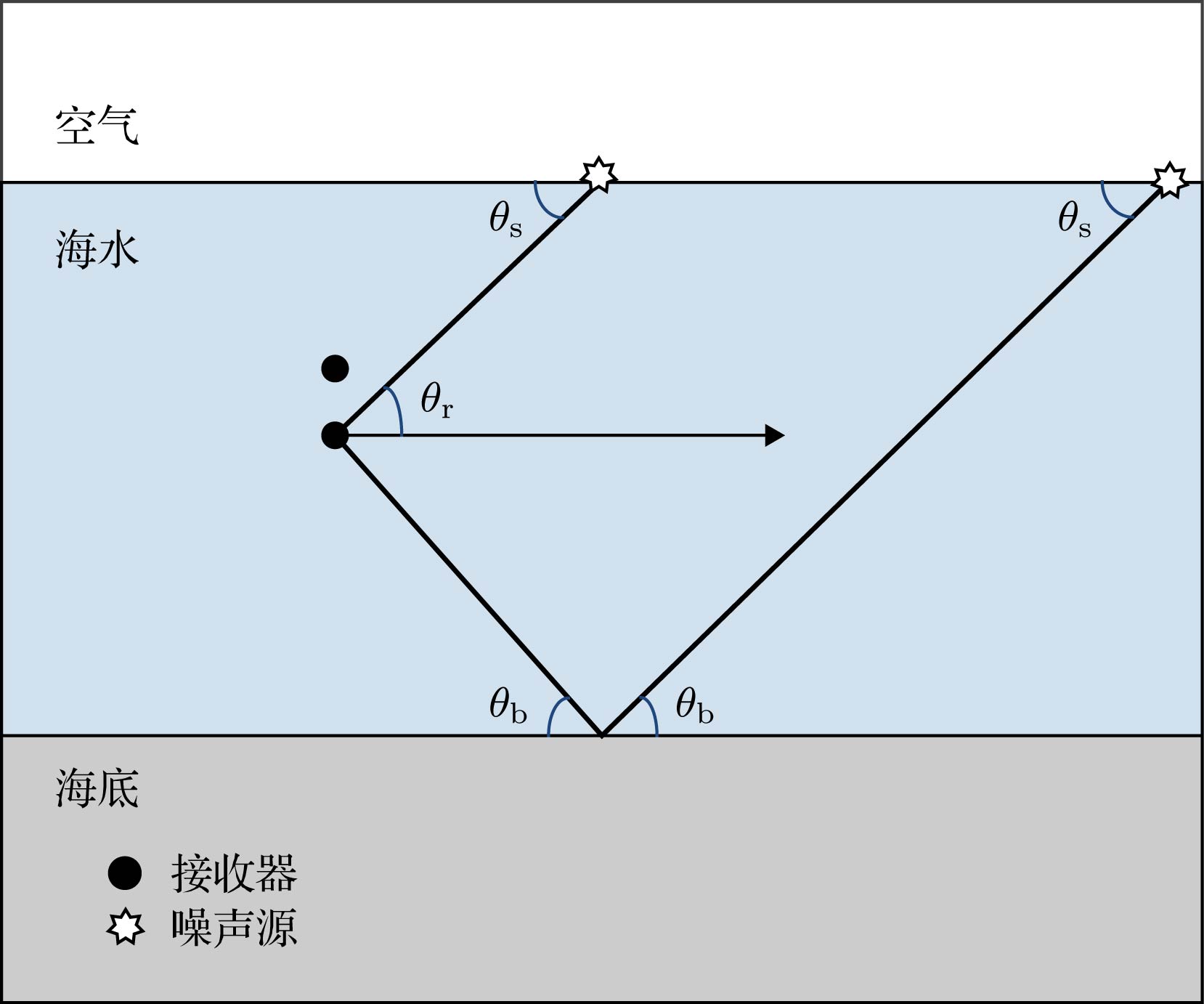
 DownLoad:
DownLoad:
